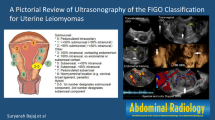Abstract
Background. The traditional operative procedures for the treatment of ovarian cancer have been simple total hysterectomy, bilateral salpingo-oophorectomy, and omentectomy. However, young patients who want to preserve fertility are occasionally encountered. This study was designed to assess the results of conservative surgical management for young women with stage I epithelial ovarian carcinoma or malignant germ cell tumor and to explore the indications for such surgical treatment.
Methods. Fifty-eight patients aged under 35 years were treated for malignant ovarian tumors (germ cell tumor, n = 20; epithelial tumors, n = 38) between 1971 and 1996. We studied all 20 patients with germ cell tumors and 22 pa-tients with stage I epithelial tumors; we excluded the 12 patients with stage II and more advanced disease and the 4 patients with stage I clear cell carcinoma, because these patients had poor prognoses. Eleven of the 22 patients with stage I epithelial tumors and 8 of the 20 patients with germ cell tumors received conservative surgery (conservative surgery group); the remaining 23 patients underwent radical surgery, including hysterectomy and bilateral salpingo-oophorectomy (radical surgery group). The overall survival rates of the two groups were compared, and ovarian function and pregnancy outcome were evaluated in the conservative surgery group.
Results. Of the patients with malignant epithelial tumor who were treated with conservative surgery, 3 patients with stage Ic mucinous adenocarcinoma died 1 year and 8 months, 7 years and 6 months, and 8 years, respectively, after the initial surgery. The 10-year survival rate was 65% for the conservative surgery group and 91% for the radical surgery group. All patients with stage Ia epithelial tumors in both groups survived, and there were no differences in survival curves between the two groups among the patients with stage Ic epithelial tumors. All patients with germ cell tumors in the conservative surgery group survived. Their survival rate, however, was not significantly better than that in the radical surgery group. All patients with germ cell tumors who received platinum-based chemotherapy survived and had a significantly better survival rate than those who received non-platinum-based regimens (P < 0.05). All the patients in the conservative surgery group received postoperative chemotherapy; 10 of these patients had transient ovulation failure after the completion of chemotherapy, although a normal menstrual cycle was restored within 1 year. Of the 10 patients who wished to have babies, 6 became pregnant, and they have had a total of 11 children.
Conclusion. Conservative surgery is feasible in patients with stage Ia epithelial carcinoma and germ cell tumor. Postoperative chemotherapy suppressed ovarian function in these patients, but only for a brief period.
Similar content being viewed by others
Author information
Authors and Affiliations
Additional information
Received: January 5, 1999 / Accepted: October 27, 1999
About this article
Cite this article
Jobo, T., Yonaha, H., Iwaya, H. et al. Conservative surgery for malignant ovarian tumor in women of childbearing age. Int J Clin Oncol 5, 41–47 (2000). https://doi.org/10.1007/s101470050008
Issue Date:
DOI: https://doi.org/10.1007/s101470050008




